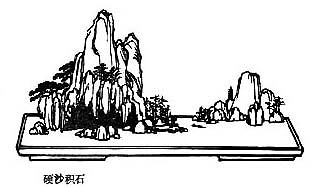Sun Zi 
 – The Art of War
– The Art of War
Chinese strategy explained : know yourself and the ennemy, use deception, spies, and "win with ease". Tr. Giles (en, annotated) and Amiot (fr).
Laying Plans
Ts`ao Kung, in defining the meaning of the Chinese for the title of this chapter, says it refers to the deliberations in the temple selected by the general for his temporary use, or as we should say, in his tent. See. ss. 26.
Sunzi I. 4.
HEAVEN signifies night and day, cold and heat, times and seasons.1
Giles I.7.
Si nous connaissons bien le temps, nous n'ignorerons point ces deux grands principes Yin et Yang par lesquels toutes les choses naturelles sont formées et par lesquels les éléments reçoivent leurs différentes modifications ; nous saurons le temps de leur union et de leur mutuel concours pour la production du froid, du chaud, de la sérénité ou de l'intempérie de l'air.
Amiot

The Art of War – Sun Zi I. 4. – Chinese off/on – Français/English
Alias Sun Tzu, Sun Wu, Sun Tse, Sunzi Bingfa, Souen Tseu, Souen Wou, 孫武.
The Book of Odes, The Analects, Great Learning, Doctrine of the Mean, Three-characters book, The Book of Changes, The Way and its Power, 300 Tang Poems, The Art of War, Thirty-Six Strategies
Welcome, help, notes, introduction, table.
Index – Contact – Top
